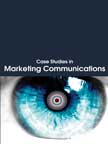Marketing Management
 |
Details
Textbook:
Pages : 500;
Paperback;
210 X 275 mm approx.
Workbook:
Pages :
282; Paperback;
210 X 275 mm approx, Sample Applied Theory Questions
Pricing
Textbook Price: Rs. 900;
Workbook Price: Rs. 700;
Available only in INDIA
Buy Now
Please allow 5 to 10 days for delivery.
Detail Table of Contents
New Product Development : Chapter 13
SUMMARY:
Firms develop new products to increase the width and depth of their product mix and compete in the market place. New products can be categorized as (1) new to the world, (2) new product lines, (3) additions to the existing product lines, (4) improvements in the existing products, (5) repositioning the existing product, and (6) reducing the cost of products.
|
|
selected to consider them for the next stage. After screening the ideas, the company tests the concept or ideas through concept testing. During concept testing, the ideas are submitted for external evaluation, to obtain the feedback from the potential market. After concept testing, the firm makes a plan for developing, producing and marketing the new product. It does a business analysis to test the technical feasibility. It then develops a product prototype, which reveals all the function and aesthetics of the product. Prototypes are developed in limited numbers in the company’ lab and are used for the testing purposes. This prototype is put through product use testing to test its functionality. Marketers then test the product in select cities and gradually commercialize it in other parts of the country depending on the response from the market.



